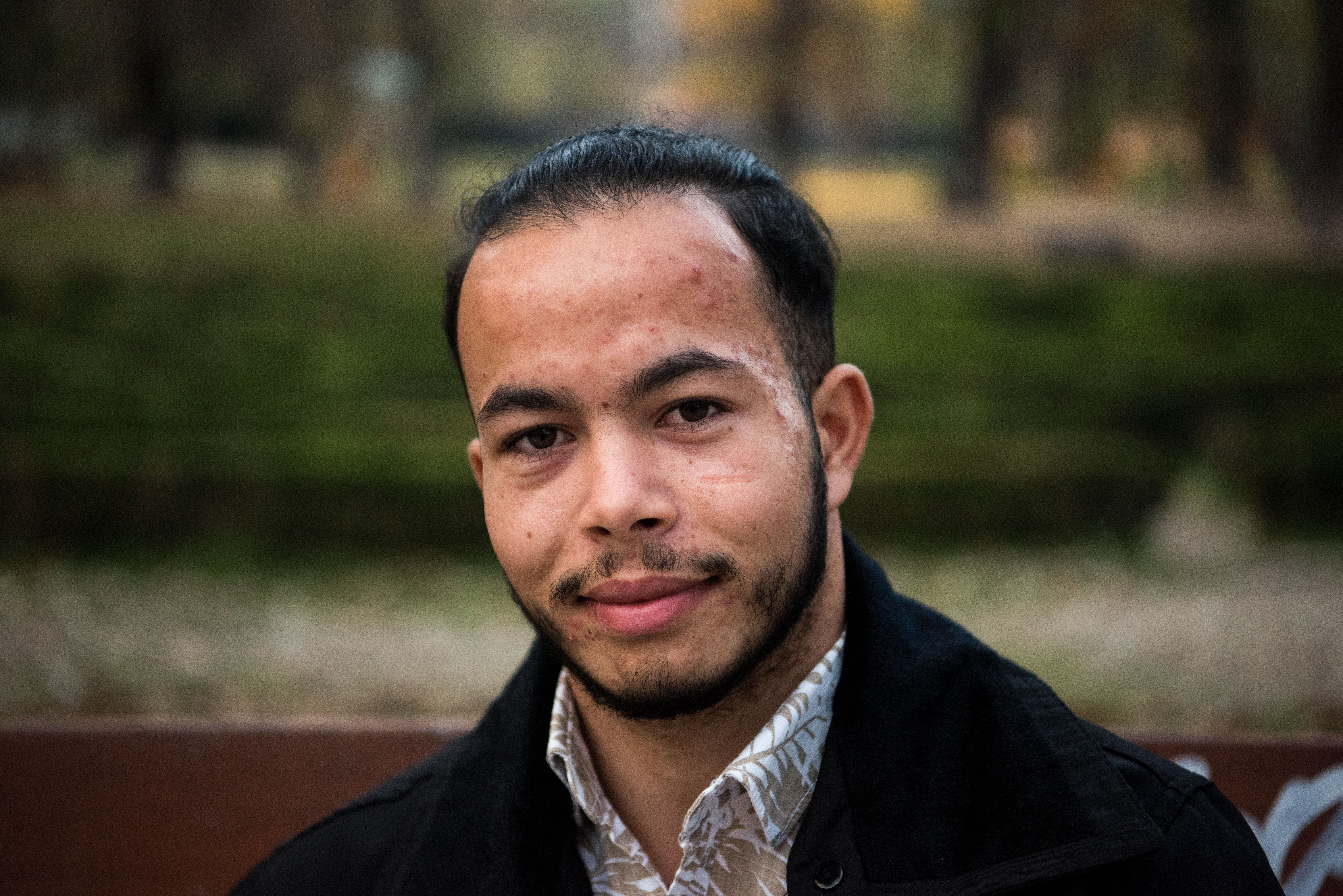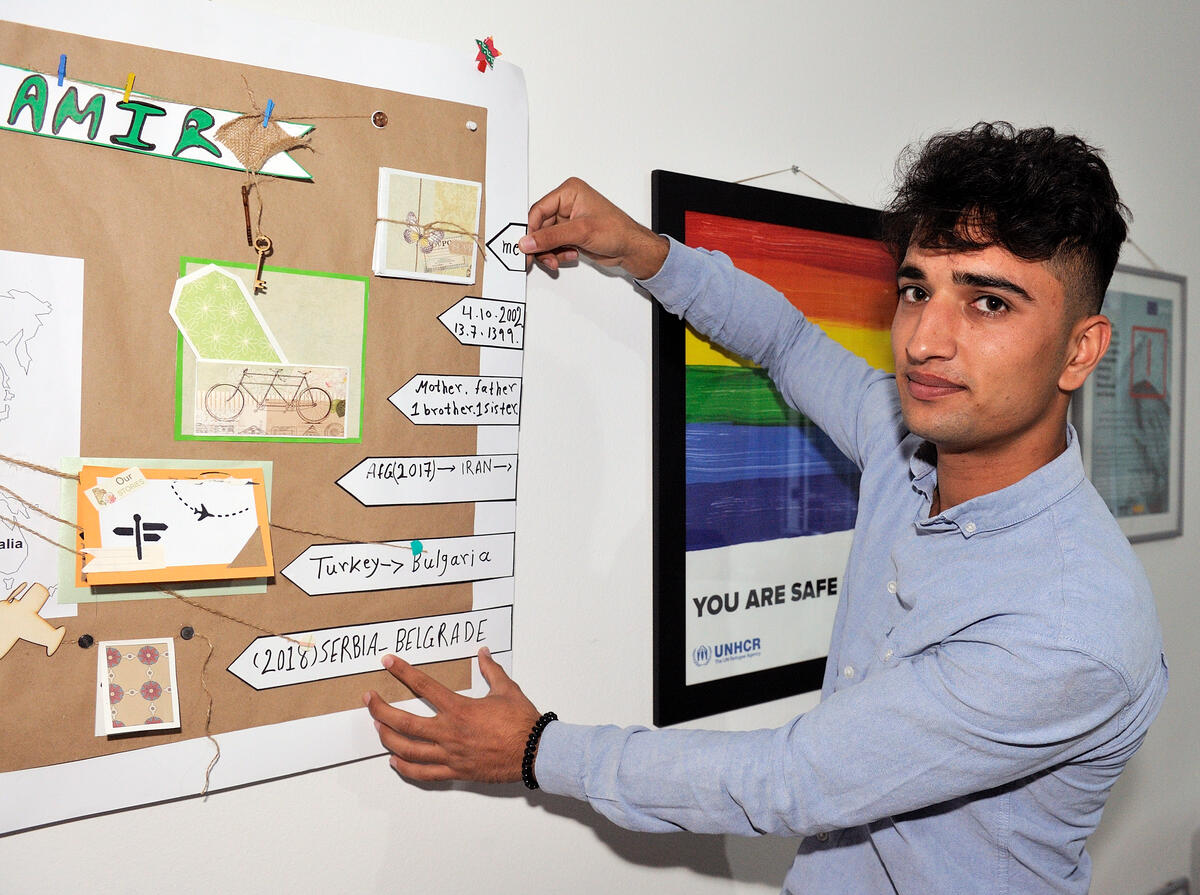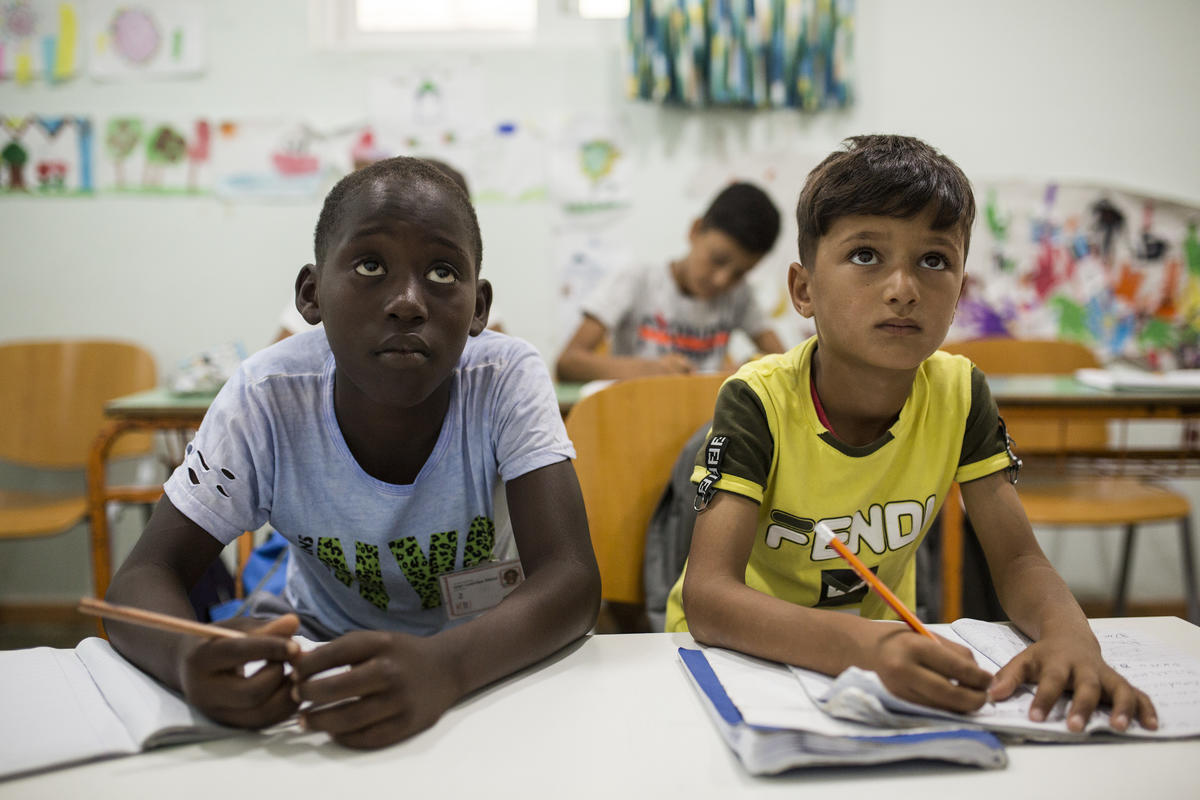Kosovo Crisis Update
Kosovo Crisis Update
Funding
Contributions to UNHCR's 1999 Kosovo emergency operation have now reached $262.8 million, or 79 percent of the revised budget of $332.9 million. The largest donors are the United States ($78.5 million), the European Commission ($65.8 million), Japan ($39.1 million) and private donors in Italy ($13.2 million).
Altogether private (non-governmental) donors have contributed $20.8 million to this operation, signalling the extent to which the crisis has touched ordinary citizens all over the world.
Returns
Around 750,000 Kosovar refugees and displaced people have returned to Kosovo since June 15. The figure includes 716,400 who have gone back from the neighbouring countries and 33,500 from countries outside the area.
At least 33,500 Kosovars have returned from third countries, including 630 refugees who flew directly this week into the Kosovo provincial capital, Pristina, from Switzerland, Norway and France. Although Pristina's airport has been opened to repatriation flights, most of the arrivals still come through the Skopje airport. Both the Pristina and Skopje return flights are arranged under a programme of UNHCR and the International Organization for Migration.
There are also returnees to Kosovo who are travelling through Albania, mainly from the western port of Durres. So far, UNHCR staff estimate that around 4,200 additional refugees have gone back through this overland route. In addition, several thousand Kosovars residing permanently in Europe also came through Albania to visit Kosovo. There have been robbery and extortion cases against these Kosovars and UNHCR has requested the Albanian government to tighten security measures along the route to Kosovo.
UNHCR estimates there are still around 53,000 Kosovo refugees and displaced people in the region, including up to 11,000 in Albania, 10,000 in Montenegro, 20,000 in the FYR of Macedonia and 12,000 in Bosnia and Herzegovina.
In Albania, a survey is underway to verify the number of remaining refugees, which is put by the government at 11,000. About 1,000 of these refugees are in 30 collective centres in Durres and Tirana. The rest are in private accommodation.
During the refugee emergency over 90,000 refugees in the FYR of Macedonia were flown to third countries under the UNHCR-IOM Humanitarian Evacuation Programme. Roughly half of the people who have come back from third countries are evacuees under the UNHCR-IOM programme. The remainder are refugees who travelled spontaneously to third countries, mostly to Turkey.
Meanwhile, IOM, UNHCR and the French government have set up a "go-and-see visit" programme for Kosovo refugees in France, which has taken in more than 5,600 evacuees from the FYR of Macedonia. The first visits are scheduled on 16 and 23 August with charter flights to Pristina's Slatina airport.
FYR of Macedonia
The Skopje government on Friday agreed to lift a customs inspection fee of 16,000 denars (around 640 DM) per truckload or train wagon of goods transiting the FYR of Macedonia, following concerns raised by UNHCR.
Convoys of aid trucks began moving to Kosovo following the government decision announced at the Foreign Ministry during a meeting with representatives of UNHCR and major donors.
The government announced the imposition of the fee in mid-July. Since then, the aid pipeline had come to a halt and there was a huge backup of supplies.
UNHCR welcomed the positive decision and commended the Skopje government for the move. The agency urged donors to respond favourably to requests from the authorities in the FYR of Macedonia for help to defray the cost of facilities and services provided to facilitate the delivery of aid to Kosovo.
On Thursday, 17 rail wagons, each carrying 80 cubic metres of timber, left Skopje and arrived in Pristina. The shipment was equivalent to about 100 truckloads. UNHCR paid the one-truck fee for each rail wagon because it was costing the agency more to leave the wagons sitting in FYR of Macedonia than to pay the fee. The shelter material, which includes heavy roof beams and other basic items, is urgently needed in Kosovo.
Kosovo
The international community is not only trying to get both Serb and Albanian health workers together but is also supporting efforts to put in place a programme that will modernize medical service in Kosovo in line with regional standards of health care.
Dr. Serge Malé, UNHCR's senior medical coordinator, reported at the close of a two-month assignment in Kosovo that Kosovars who remained behind in Kosovo were generally in acceptable health.
He said fears that because displaced people in the Serbian province had no access to food during the war most of them were probably suffering from high mortality rates and severe malnutrition proved unfounded.
Malé said initial assessments that covered 50 to 70 percent of Kosovo during the first few weeks following the resumption of international operations in Kosovo in mid-June showed that athough a lot of people had a hard time in the final stages of the conflict, the situation in the province did not require a "major emergency intervention" in the health sector.
Basic health care services have been re-established rapidly as well as essential referral services in hospitals. He said the health of the returnees was not a concern because they received assistance in the asylum countries.
Animosities between Serb and Albanian workers remain a serious concern in the hospitals, however, in some cases preventing equal access to health care. The hospital in Pristina has become an almost pure Albanian operation, with Serbs abandoning their posts and the Albanians who lost their jobs in 1990 reclaiming their former positions. However, in Mitrovica and Gnjilane, despite ethnic pressures, Serb and Albanian workers are trying to work together.
Malé said the challenge to the international community is not only rebuilding and reequiping the infrastructure, but also helping staff to acquire new administrative and technical skills.
Health care in Kosovo is mainly hospital-based. He urged efforts to bring medical care to the grassroots, in the villages, building upon the coping mechanisms that Kosovars themselves have put in place over the past decade, and opening doors to a balanced system, financed both publicly and privately.
Meanwhile, the government of Japan is expected to ship the first of 500 container shelters to Kosovo this weekend. The shelters were used in the aftermath of the Kobe earthquake and will be used for housing in heavily damaged urban areas in Kosovo.
Minorities
In a spate of ethnic violence, two Serbs and one Albanian were killed in Gnjilane on Wednesday when a convoy of Serb vehicles came under fire in the Albanian village of Dobrcane (Miresh in Albanian). The attack prompted some Serbs to flee into Serbia.
In Kamenica, the presence of Russian KFOR troops has sparked Albanian attacks against Serbian neighbourhoods. The Albanians are obviously trying to send a message that the presence of the Russians will not ensure the security of the Serbs in the region.
On Monday, Serbs set up "flying checkpoints" in Kamenica; Albanians then established their own roadblocks. Several staff of the International Rescue Committee were trapped in the middle of the checkpoints for eight hours, raising concern among aid workers.
Last Sunday, around 300 Serbs fled Zitinje village in Vitina following Albanian attacks against Serbs in mixed communities in the region.
Serbs in many enclaves in the eastern region have expressed willingness to enter into a dialogue with Albanians. However, the Albanians are increasingly reluctant to talk to them. In Vitina, Albanians failed to show up at a meeting arranged this week. There are even some unconfirmed reports that Albanians backing moderate leader Ibrahim Rugova have been prevented by the Kosovo Liberation Army from conducting a dialogue with Serbs.








